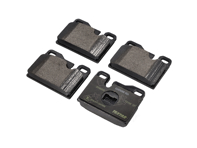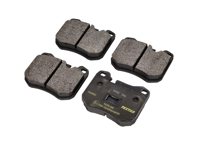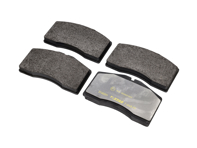TEXTAR Brakes


Boiling point brake fluid testing is the only test method approved by brake & brake fluid manufacturers
- Increase service revenue & road safety
- Accurate, reliable & repeatable results
- Operates off the vehicles own 12 volt battery
- Measures up to 320°, suitable for use on all grades of brake fluid including racing fluids
- Multilanguage: English, German, French, Spanish, Italian
Find out about Textar product verification here


Brake fluid is one of the most important fluids in a car as without it, stopping the vehicle safely would be impossible. The Brake fluid transmits the force exerted by the driver on the brake pedal onto the wheel brake.
To ensure perfect operation of the brakes, the brake fluid must be changed regularly during inspection or maintenance and tested with the correct brake fluid tester.
Brake fluid should be changed every two years.
The higher the DOT class, the higher the boiling temperature and wet boiling point. Higher DOT classes tend to allow longer maintenance intervals. The DOT standards are based on the American FMVSS-116 standard of the Department of Transportation (DOT).
Boiling Point and Viscosity
Dry Boiling Point - describes the property of the sealed new brake fluid. In this state, the brake fluid is almost anhydrous (substance containing no water). The dry boiling point is usually between 240 and 280°C.
Wet Boiling Point - determines the property of the brake fluid at the end of its life cycle, at a water content of 3.5% the fluid should be replaced. This defined wet boiling point must not be undercut.
Viscosity - describes the flow rate of the brake fluid. The lower the viscosity, the faster the brake fluid flows through the brake system, and the faster the brake signals are transmitted.
Important Notes
• Brake fluid is poisonous and a hazardous waste.
• Be careful when changing. The fluid weakens paints and plastics.
• It must not come into contact with eyes or skin. Always rinse spilled liquid with water.
• Do not pour the liquid into drinking water or mix with used oil.
• The colour of the brake fluid reveals nothing about its quality.
• Brake fluid should be stored in its original packaging and in a dry, cool and well-ventilated place.
Find out about Textar product verification here

Brake fluid DOT 4 LV (Low Viscosity) Textar.

Textar DOT 4 LV (Low Viscosity) is especially recommended for use in hydraulic brake and clutch systems of vehicles fitted with ESP, ABS and ASR with a high boiling point and outstanding performance at very low temperatures.
DOT 4 LV (Low Viscosity)
Dry Boiling Point ≥ 260° C
Wet Boiling Point ≥ 165° C
Viscosity at -40C < 750 mm2 /s
Brake fluid is one of the most important fluids in a car as without it, stopping the vehicle safely would be impossible. The Brake fluid transmits the force exerted by the driver on the brake pedal onto the wheel brake.
To ensure perfect operation of the brakes, the brake fluid must be changed regularly during inspection or maintenance and tested with the correct brake fluid tester.
Brake fluid should be changed every two years.
The higher the DOT class, the higher the boiling temperature and wet boiling point. Higher DOT classes tend to allow longer maintenance intervals. The DOT standards are based on the American FMVSS-116 standard of the Department of Transportation (DOT).
Boiling Point and Viscosity
Dry Boiling Point - describes the property of the sealed new brake fluid. In this state, the brake fluid is almost anhydrous (substance containing no water). The dry boiling point is usually between 240 and 280°C.
Wet Boiling Point - determines the property of the brake fluid at the end of its life cycle, at a water content of 3.5% the fluid should be replaced. This defined wet boiling point must not be undercut. <
Viscosity - describes the flow rate of the brake fluid. The lower the viscosity, the faster the brake fluid flows through the brake system, and the faster the brake signals are transmitted.
Important Notes
• Brake fluid is poisonous and a hazardous waste.
• Be careful when changing. The fluid weakens paints and plastics.
• It must not come into contact with eyes or skin. Always rinse spilled liquid with water.
• Do not pour the liquid into drinking water or mix with used oil.
• The colour of the brake fluid reveals nothing about its quality.
• Brake fluid should be stored in its original packaging and in a dry, cool and well-ventilated place.
Find out about Textar product verification here
Related reference numbers
Related, superseded, cross reference or alternative numbers for comparison.
95006
The product you are viewing cross references to these numbers


Brake fluid is one of the most important fluids in a car as without it, stopping the vehicle safely would be impossible. The Brake fluid transmits the force exerted by the driver on the brake pedal onto the wheel brake.
To ensure perfect operation of the brakes, the brake fluid must be changed regularly during inspection or maintenance and tested with the correct brake fluid tester.
Brake fluid should be changed every two years.
The higher the DOT class, the higher the boiling temperature and wet boiling point. Higher DOT classes tend to allow longer maintenance intervals. The DOT standards are based on the American FMVSS-116 standard of the Department of Transportation (DOT).
Boiling Point and Viscosity
Dry Boiling Point - describes the property of the sealed new brake fluid. In this state, the brake fluid is almost anhydrous (substance containing no water). The dry boiling point is usually between 240 and 280°C.
Wet Boiling Point - determines the property of the brake fluid at the end of its life cycle, at a water content of 3.5% the fluid should be replaced. This defined wet boiling point must not be undercut.
Viscosity - describes the flow rate of the brake fluid. The lower the viscosity, the faster the brake fluid flows through the brake system, and the faster the brake signals are transmitted.
Important Notes
• Brake fluid is poisonous and a hazardous waste.
• Be careful when changing. The fluid weakens paints and plastics.
• It must not come into contact with eyes or skin. Always rinse spilled liquid with water.
• Do not pour the liquid into drinking water or mix with used oil.
• The colour of the brake fluid reveals nothing about its quality.
• Brake fluid should be stored in its original packaging and in a dry, cool and well-ventilated place.
Find out about Textar product verification here
Related reference numbers
Related, superseded, cross reference or alternative numbers for comparison.
95002
The product you are viewing cross references to these numbers

- Porsche 924 2.0L 1980-85
- Porsche 924 Turbo 2.0L 1979-81
- Porsche 924 Turbo 2.0L 1982-84
- Porsche 924S 2.5L 1986-87
- Porsche 924S 2.5L 1988
- Porsche 944 2.5L 8V 1982-87
- Porsche 944 2.7L 8V 1988-89
- Porsche 944S 2.5L 16V 1987-88
- Porsche 928 4.5L 1978-82
- Porsche 928S 4.7L 1981-83
- Porsche 928S2 4.7L 1984-86


Porsche 924 FRONT

Porsche 928 / 928 S / 928 S2 1978-85 REAR
Porsche 924S / 924 Turbo REAR
Porsche 944 / 944S Upto 1989 REAR
Sold as set of 4 pads for one axle.
Find out about Textar product verification here
Related reference numbers
Related, superseded, cross reference or alternative numbers for comparison.
94435295102TEX
The product you are viewing cross references to these numbers

- Porsche 964 (911) RS 3.6L 1991-93
- Porsche 964 (911) RS 3.8L 1991-93
- Porsche 964 (911) TURBO 3.3L 1991-93
- Porsche 993 (911) C2 1994-97
- Porsche 993 (911) C4 1994-97
- Porsche 993 (911) C2S 1994-97
- Porsche 993 (911) C4S 1994-97
- Porsche 993 (911) TURBO 1994-96
- Porsche 944 Turbo 2.5L 8V 1985-88
- Porsche 944 Turbo 2.5L 8V 1989-91
- Porsche 944 Turbo S 2.5L 8V 1988
- Porsche 968 CS 3.0L 1993-95
- Porsche 928S4 5.0L 1987-92
- Porsche 928GT 5.0L 1989-91


Porsche 911 (993) C2/C4 1994-98 FRONT
Porsche 911 (993) C2S 1994-98 FRONT
Porsche 968 CS 1991-95 FRONT
Porsche 944 Turbo 1986>> FRONT
Porsche 944 Turbo S M758 FRONT
Porsche 928 1987-91 FRONT
Porsche 911 (964 RS) FRONT
Porsche 964 Turbo 3.3L FRONT
Porsche 911 (993) Turbo 1994-98 REAR
Porsche 911 (993) C4S 1994-98 REAR
Sold as set of 4 pads for one axle.
Find out about Textar product verification here
Related reference numbers
Related, superseded, cross reference or alternative numbers for comparison.
99335193905TEX
The product you are viewing cross references to these numbers

- Porsche 928 4.5L 1978-82
- Porsche 928S 4.7L 1981-83
- Porsche 928S2 4.7L 1984-86


Porsche 928 1978-80 chassis number 92A08000750 onwards FRONT
Porsche 928S chassis number 92A0820001 onwards FRONT
Sold as set of 4 pads for one axle.
Find out about Textar product verification here
Related reference numbers
Related, superseded, cross reference or alternative numbers for comparison.
92835193101TEX
The product you are viewing cross references to these numbers

- Porsche 944 2.5L 8V 1982-87
- Porsche 944 2.7L 8V 1988-89
- Porsche 944S 2.5L 16V 1987-88
- Porsche 928 4.5L 1978-82


Porsche 928 1978-82 upto chassis number 92A08000749 FRONT
Porsche 924S / 924 Turbo FRONT
Porsche 944 / 944S Upto 1989 FRONT
Sold as set of 4 pads for one axle.
Find out about Textar product verification here
Related reference numbers
Related, superseded, cross reference or alternative numbers for comparison.
94435195104TEX
The product you are viewing cross references to these numbers

- Porsche 993 (911) RS 1994-97
- Porsche 993 (911) C4S 1994-97
- Porsche 993 (911) TURBO 1994-96
- Porsche 928GTS 5.4L 1992-95

Porsche 911 (993) C4S 1994-98 FRONT
Porsche 911 (993) Turbo 1994-98 FRONT
Porsche 911 (993) RS 1994-98 FRONT
Porsche 928 GTS FRONT
Porsche 965 3.6L Turbo FRONT
Sold as set of 4 pads for one axle.
Find out about Textar product verification here
Related reference numbers
Related, superseded, cross reference or alternative numbers for comparison.
99335194904TEX
The product you are viewing cross references to these numbers

- Porsche 911 1984-1986 3.2L
- Porsche 911 1987-1989 3.2L G50
- Porsche 911 1975-1977 3.0L Turbo (930)
- Porsche 911 1978-1989 3.3L Turbo (930)
- Porsche 964 (911) C2 1989-93
- Porsche 964 (911) C4 1989-93
- Porsche 964 (911) RS 3.6L 1991-93
- Porsche 964 (911) RS 3.8L 1991-93
- Porsche 964 (911) TURBO 3.3L 1991-93
- Porsche 964 (911) TURBO 3.6L 1991-93
- Porsche 993 (911) C2 1994-97
- Porsche 993 (911) C4 1994-97
- Porsche 993 (911) C2S 1994-97
- Porsche 993 (911) C4S 1994-97
- Porsche 944S2 3.0L 16V 1989-91
- Porsche 944 Turbo S 2.5L 8V 1988
- Porsche 968 3.0L 1992-94
- Porsche 968 Sport 3.0L 1994-95
- Porsche 968 CS 3.0L 1993-95
- Porsche 928S2 4.7L 1984-86
- Porsche 928S4 5.0L 1987-92
- Porsche 928GT 5.0L 1989-91
- Porsche 928GTS 5.4L 1992-95

Porsche 964 C4 FRONT
Porsche 964 C4 Turbo-Look FRONT
Porsche 964 C2 1990-94 FRONT
Porsche 944 Turbo 1987>> FRONT
Porsche 944 S2 TURBO FRONT
Porsche 930 TURBO 1975-89 FRONT
Porsche 968 STD FRONT
Porsche 911 3.2L SUPERSPORT* FRONT

Porsche 993 C2/C4 1994-98 REAR
Porsche 993 C2S 1994-98 REAR
Porsche 964 C4 1989>> REAR
Porsche 964 C2 1992>> REAR
Porsche 965 Turbo REAR
Porsche 964 RS REAR
Porsche 968 CS M030 1991-95 REAR
Porsche 944 Turbo S 1988 REAR
Porsche 944 S2 M030 option REAR
Porsche 928 1983-95 REAR
Porsche 944 S2 TURBO REAR
Porsche 968 STD REAR
Porsche 930 TURBO 1975-89 REAR
Porsche 911 3.2L SUPERSPORT* REAR
*Factory widebody cars with Turbo brakes.
Find out about Textar product verification here
Related reference numbers
Related, superseded, cross reference or alternative numbers for comparison.
96435193903TEX
The product you are viewing cross references to these numbers


For brake systems and is highly temperature-resistant (up to 1,000°C).
Available in 75ml tube and 5ml sachet
The advantages of Cera Tec:
• Non-conductive and contains no solids
• Suitable for ABS
• Facilitates brake installation
• Reduces brake squealing
• Protects against scoring and corrosion
• Free of copper and acids
• Pressure-resistant / high viscosity
Cera Tec is also suitable for lubricating:• Disc- and drum-brake systems
• Compressors
• Centralised lubrication systems
• Axle bearings
• Chains
• Seat rails
• Sunroof tracks
• Battery terminals
Application:
Apply a thin layer of Cera Tec on the marked sections
Find out about Textar product verification here

Hydra tec lubricant for maintenance work and protection Textar
Available in 75ml Tube or 5ml Sachet
The Advantages of Hydra Tec:
- Facilitates the installation of hydraulic brake components
- Tested compatibility with commercially available braking fluids (DOT3, DOT4, DOT4LV, DOT5.1)
- Free of mineral oils and compatible with EPDM rubber
- In addition, running surfaces are protected against corrosion
Hydra Tec is suitable for lubricating:
- Cylinder running surfaces
- Pistons
- Sealing elements
Application:
Apply a thin layer of Hydra Tec on the marked sections.
Note:
Hydra Tec should be applied thinly and evenly.
Never use mineral oils or greases as substitutes.
Do not apply the product on friction surfaces of brake pads or brake discs.
Find out about Textar product verification here






